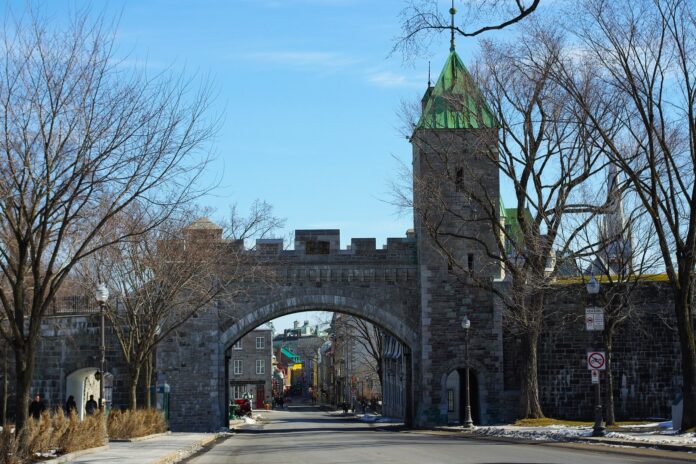One of the most beautiful cities in Canada has to be Quebec City, a.k.a. Ville de Québec. Even though I aced geography in elementary school, I had no idea this stunning locale is situated on a rocky bluff high above the St. Lawrence Seaway.
Or, maybe I did know that at one time, but had long since forgotten. Regardless, I was quick to ‘discover’ this important fact on my first walk about the town.
Striding for the top
Strategically placed throughout Quebec City are public stairways that allow you to traverse up-and-down the bluff. In one week, I must have ascended and descended ‘l’escaliers’ (the stairs) at least 20 times. Encouraging mini bursts of spontaneous cardio throughout my stay.
The smallest set was a piece of cake, with only 96 stairs to conquer. It proved easy enough! However, the biggest set was another story. Measuring in at 391 steps, I had to really pace myself. Discovering first hand why it’s such a popular spot for active residents to come and do their daily workouts.
Being an active tourist, I did a few intentional training sessions on those stairs myself. Taking little rest breaks every 50 steps or so was the only way this flatlander would successfully reach the top. It also made me extra appreciate living on the prairies.
Old Quebec City
One of the oldest cities in Canada, Samuel de Champlain established a permanent settlement here in July of 1608. Today, it remains the only completely garrison-walled city north of Mexico.
Vieux-Québec is an historic neighbourhood that is listed on the UNESCO World Heritage Site. More than five million tourists visit old Quebec City every year – and it’s easy to see why. Walking through any one of the four gates is like stepping back in time.
Most buildings you’ll see here are either original from the 19th Century, or replicates of initial architecture. Horse-drawn carriages carry passengers along cobble-stone streets. Stone-covered cathedrals rise above narrow alleys lined with gift shops, restaurants and bakeries. It’s like another world, full of new-but-old places.
Plains of Abraham
Just outside the walled-city, the Plains of Abraham was home to a renowned 18th Century battle that charted the course of Canada. On September 13, 1759, British soldiers approached the region by night. They surprised and defeated the French, and ended up taking control of Canada the following year.
Today, an expansive urban park commemorates this era of colonization with historic monuments. A gathering place, too, it also stages seasonal festivals and hosts major concerts like Paul McCartney, Madonna, and Roger Waters, who have all played outdoors in this sprawling city space.
Becoming bilingual
Quebec City also attracts people who want to learn French. Such as moi.
Growing up with a fluently French mother, aunts, uncles, and cousins, my siblings and I should all be bilingual. Except we are not. Hence, the urge to one day be able to speak French. Which, truth be told, sometimes seems like an unsurmountable task.
After researching a number of destinations to study, I chose an immersion program at Ecole Québec Monde. While they allow you to learn at your own pace, they do make you sign an agreement to speak only French inside and outside of class.
There are plenty of places to stay in Quebec City, too, while taking French classes. I opted for a home-stay in order to have a fully immersive experience. There are accommodations for all tastes, and when I travel I often book my stays through Booking.com.
Baby steps
The commitment to learn was pretty nerve-wracking at first, as I built up courage to start engaging Quebecers in my badly broken French. Fortunately, the people I met were patient and helpful. I was able to gain some conversational confidence in just a few days.
Soon enough, I even found it fun! Even though it was always challenging. But I did manage to order some restaurant meals, do a little souvenir shopping, find my way around old Quebec City, and enjoy a tall Caesar with extra limes, all without speaking un mot d’anglais.
Truth be told, the pocket-sized French-English dictionary came in handy. Something I was just as grateful to have as those cardio rest breaks on the stairs.







